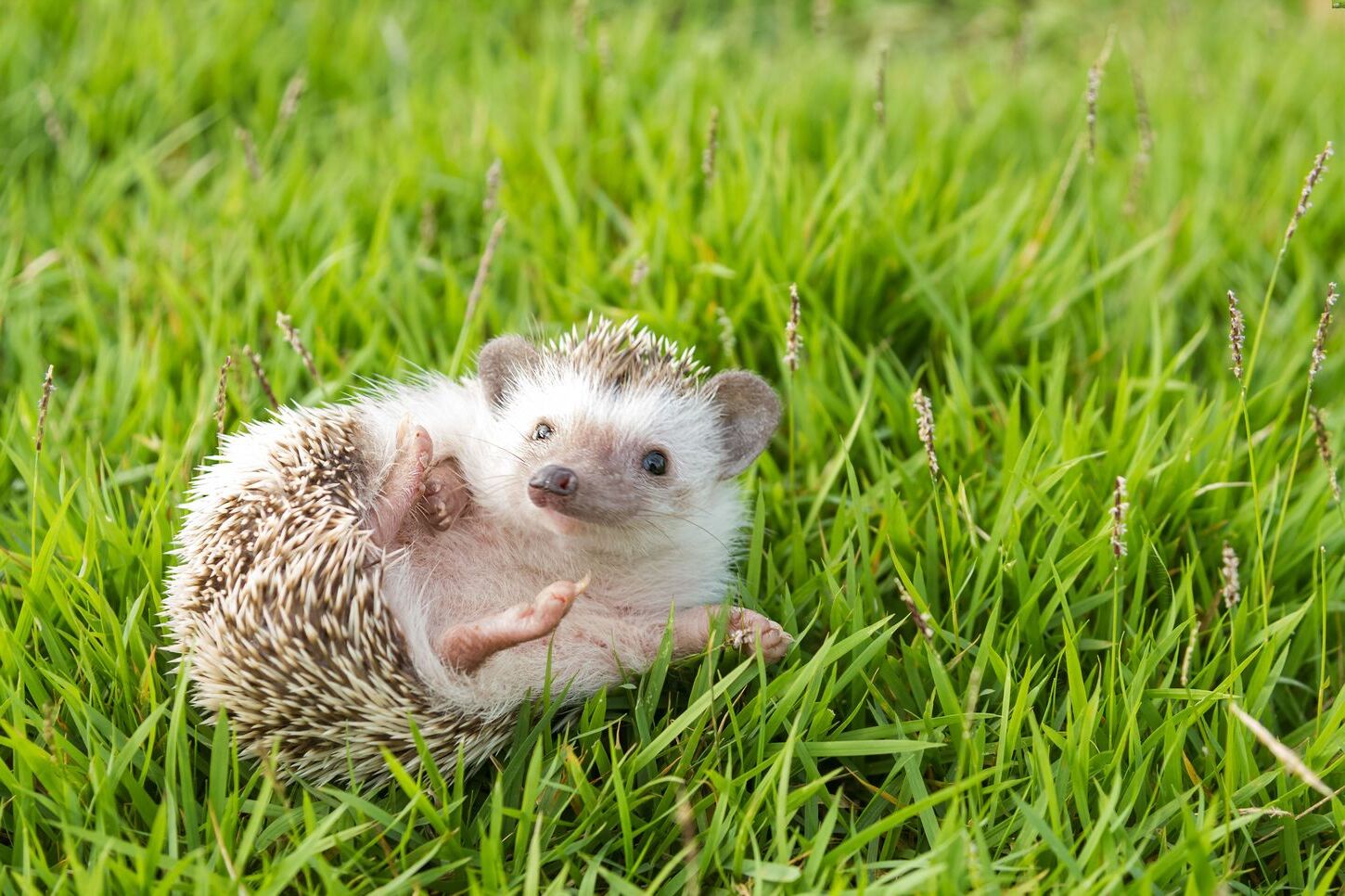
Wobbly Hedgehog Syndrome (WHS) is a neurological condition affecting hedgehogs, causing progressive paralysis and muscle wasting. Symptoms often start with wobbliness in the hind legs, eventually spreading to the front legs and other parts of the body. Affected hedgehogs may struggle with basic activities like walking, eating, and grooming. WHS is similar to multiple sclerosis in humans and is currently incurable. Veterinarians can provide supportive care to improve the quality of life for hedgehogs with WHS. Understanding this condition is crucial for hedgehog owners to recognize early signs and seek appropriate care. Let's explore 40 facts about WHS to better understand and manage this condition.
Key Takeaways:
- Wobbly Hedgehog Syndrome (WHS) is a genetic disease that affects hedgehogs, causing wobbling and muscle weakness. There is no cure, but supportive care and regular vet check-ups can help manage symptoms and improve their quality of life.
- Responsible breeding and genetic testing can help prevent Wobbly Hedgehog Syndrome (WHS) in hedgehogs. Caring for a hedgehog with WHS requires patience, adjustments to their living environment, and emotional support for both the hedgehog and their owner.
What is Wobbly Hedgehog Syndrome?
Wobbly Hedgehog Syndrome (WHS) is a progressive, neurological disease affecting hedgehogs. It primarily impacts African pygmy hedgehogs. Understanding WHS can help in providing better care for these adorable creatures.
-
WHS is a genetic disorder: This disease is inherited, meaning it can be passed down from parent hedgehogs to their offspring.
-
Symptoms appear between 2-3 years of age: Most hedgehogs start showing signs of WHS when they are around two to three years old.
-
First signs include wobbling: The initial symptom is usually a noticeable wobble when the hedgehog tries to walk.
-
Progressive muscle weakness: As the disease advances, hedgehogs experience muscle weakness, making movement increasingly difficult.
-
Paralysis can occur: In severe cases, WHS can lead to complete paralysis, leaving the hedgehog unable to move.
How is WHS Diagnosed?
Diagnosing WHS involves observing symptoms and ruling out other potential causes. Veterinarians play a crucial role in this process.
-
No definitive test: Currently, there is no specific test to diagnose WHS. Diagnosis is based on clinical signs and ruling out other conditions.
-
MRI and X-rays: These imaging techniques can help rule out other neurological issues, such as tumors or spinal injuries.
-
Blood tests: Blood work can help identify other potential health problems that might mimic WHS symptoms.
-
Necropsy confirmation: The only way to definitively diagnose WHS is through a necropsy (animal autopsy) after the hedgehog has passed away.
Treatment Options for WHS
While there is no cure for WHS, certain treatments can help manage symptoms and improve the hedgehog's quality of life.
-
Supportive care: Providing a comfortable environment and assisting with mobility can help hedgehogs with WHS.
-
Physical therapy: Gentle exercises can help maintain muscle strength and flexibility.
-
Medications: Anti-inflammatory drugs and pain relievers can alleviate some symptoms.
-
Dietary changes: A balanced diet rich in nutrients can support overall health.
-
Hydration: Ensuring the hedgehog stays hydrated is crucial, especially if they have difficulty drinking on their own.
Preventing WHS
Preventing WHS involves responsible breeding practices and awareness among hedgehog owners.
-
Selective breeding: Breeding hedgehogs without a history of WHS can reduce the risk of passing the disease to offspring.
-
Genetic testing: While not widely available, genetic testing can help identify carriers of the WHS gene.
-
Educating breeders: Raising awareness among breeders about the importance of avoiding breeding hedgehogs with WHS can help reduce its prevalence.
-
Monitoring health: Regular veterinary check-ups can help detect early signs of WHS and other health issues.
Living with a Hedgehog with WHS
Caring for a hedgehog with WHS requires patience, dedication, and a few adjustments to their living environment.
-
Modify their habitat: Make their living space more accessible by lowering ramps and providing soft bedding.
-
Assist with feeding: Hand-feeding or using shallow dishes can help hedgehogs with mobility issues eat more easily.
-
Regular vet visits: Frequent check-ups can help manage symptoms and ensure the hedgehog's comfort.
-
Monitor weight: Keeping track of their weight can help detect any changes in health or appetite.
-
Provide enrichment: Toys and activities that don't require much movement can keep them mentally stimulated.
Emotional Impact of WHS
WHS not only affects hedgehogs physically but can also have an emotional impact on both the animals and their owners.
-
Stress in hedgehogs: The inability to move freely can cause stress and frustration in hedgehogs.
-
Owner's emotional toll: Watching a beloved pet struggle with WHS can be emotionally challenging for owners.
-
Support groups: Joining online communities or support groups can provide emotional support and practical advice.
-
Quality of life: Focus on maintaining the hedgehog's quality of life through comfort and care.
Research and Future Directions
Ongoing research aims to better understand WHS and find potential treatments or preventive measures.
-
Genetic studies: Researchers are studying the genetic basis of WHS to identify potential targets for treatment.
-
New therapies: Experimental treatments are being explored to slow the progression of WHS.
-
Awareness campaigns: Increasing awareness about WHS can lead to more funding and research opportunities.
-
Veterinary education: Educating veterinarians about WHS can improve diagnosis and care for affected hedgehogs.
Interesting Facts about Hedgehogs
Hedgehogs are fascinating creatures with unique characteristics beyond WHS.
-
Nocturnal animals: Hedgehogs are primarily active at night, foraging for food and exploring their environment.
-
Insectivores: Their diet mainly consists of insects, but they also eat fruits, vegetables, and small animals.
-
Self-anointing behavior: Hedgehogs often lick and chew on new scents, then spread the frothy saliva on their quills.
-
Quills are not barbed: Unlike porcupines, hedgehog quills are not barbed and do not detach easily.
-
Excellent sense of smell: Hedgehogs rely heavily on their sense of smell to find food and navigate their surroundings.
-
Solitary creatures: Hedgehogs prefer to live alone and can become territorial if housed with other hedgehogs.
-
Hibernation: In the wild, some hedgehog species hibernate during cold months to conserve energy.
-
Communication: Hedgehogs communicate through a variety of sounds, including snuffles, grunts, and squeals.
-
Lifespan: Hedgehogs typically live for 3-7 years, with proper care extending their lifespan.
Final Thoughts on Wobbly Hedgehog Syndrome
Wobbly Hedgehog Syndrome (WHS) is a serious condition affecting many pet hedgehogs. Understanding the symptoms, like wobbling, weight loss, and muscle weakness, helps in early detection. Regular vet check-ups and a balanced diet can improve your hedgehog's quality of life. While there's no cure, supportive care can make a big difference. Keep your hedgehog's environment safe and comfortable to prevent injuries. Awareness and education about WHS are crucial for all hedgehog owners. By staying informed, you can provide the best care for your spiky friend. Remember, early intervention and proper care are key to managing WHS. Always consult with a vet if you notice any signs of WHS. Your hedgehog's health and happiness depend on your vigilance and care. Stay proactive, and your hedgehog can still enjoy a fulfilling life despite WHS.
Frequently Asked Questions
Was this page helpful?
Our commitment to delivering trustworthy and engaging content is at the heart of what we do. Each fact on our site is contributed by real users like you, bringing a wealth of diverse insights and information. To ensure the highest standards of accuracy and reliability, our dedicated editors meticulously review each submission. This process guarantees that the facts we share are not only fascinating but also credible. Trust in our commitment to quality and authenticity as you explore and learn with us.


